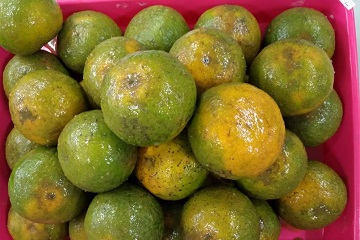Be-Herb, Herbal Powder Keeps The Quality of Fruits Made by IPB Students

Post-harvesting is an important phase in agriculture. Post-harvest handling is very influential on the quality of fruits. In this phase, damages that cause quality decreasing is susceptible to occur. Three students of Bogor Agricultural University (IPB) from Department of Plant Protection that are Kiki Adelina, Retno Asih, and Milad Rahmatillah has been attempted to make a powder that can sustain the post-harvest quality of fruits. They named it Be-Herb (Herbal Powder to Control Post-Harvest Diseases).
“Damages or injuries may be happened to fruits during post-harvest handling and distribution process. Those injuries allow fungus or bacteria to grow causing fruits to rot and become inedible. We are offering new technology which is herbal powder made from lemongrass, betel and ginger. They are herbs that often found in Indonesia. Lemongrass, betel and ginger contain antimicrobial and are good for health. They can also be natural pesticide for insect pests, but for post-harvest disease it has not been tested yet,” stated Adelina.
This powder is one of edible coatings, which is coating material that safe to be consumed. There two types of coating those are edible (consumable) and non edible (can be consumed). Non edible coating is such as wax coating, while Be-Herb is one of edible coatings that is safe for health.
“Be-Herb will coat the fruits so it prevents external pathogens to attack or internal pathogens to grow, because the coating contains antimicrobial compound that is not desirable for pathogens such as essential oils. The usage of this herbal powder is by immersion with the addition of tapioca flour and xanthan gum. Tapioca is used as the carrier material and xanthan gum as emulsifier so the herbs and tapioca mixture can be homogeneous,” she explained.
Under the supervision of dr.Ir. Giyanto, M.Si, their research has been successfully chosen in Student Creativity Program in Research field (PKM-PE). Recently they are testing this powder to apple, Medan oranges, and tomato. The are attempting to find the best concentration for powder application on fruits.
“We are examining the concentration of 0, 2.5, 5.0 and 7.5 percent. We will test it on apple, Medan orange, and tomato. We hope the fruits coated with this edible coating will have longer shelf-time and lower pathogens attack,” she implied.(qa)



